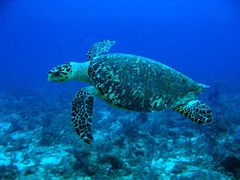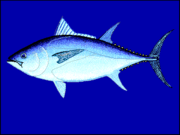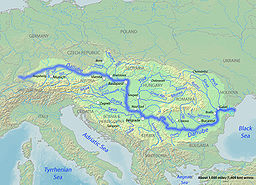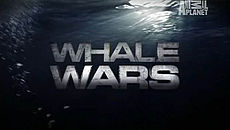Category Archives: Environmental
Coral Facing Imminent Threat From Toxic Algae
Blooms of toxic algae could possibly wipe out coral reefs.
Researchers who have been studying the coral reefs in the Gulf of Oman have sounded the alarm after a big algae bloom laid waste to an entire coral reef in just three short weeks.
Some ninety-five percent of the hard coral directal under the algae died off, and seventy percent fewer fish were found in the vicinity.
The algae grows rapidly and hog all the sunlight and oxygen which the coral need to survive.
Add in climate change, development along the coasts, overfishing and pollution and you have a rather bleak outlook for the coral reefs of the world.
The biggest threat facing the coral reefs is climate change, which has caused many coral bleaching events around the globe.
However, this latest discovery, which was published in the journal Marine Pollution Bulletin postulates that algal blooms are just as much a threat to the coral reefs.
Scientists from the United Nations University Institute for Water, Environment and Health had taken it upon themselves to study the environment of two different coral reefs in the Gulf of Oman.
After they finished up their first study, an algae bloom which measured over 500 square kilometers happened in the area.
After the scientists made a return visit some three weeks after the fact, they discovered that the coral under the bloom had been almost completely destroyed.
So, it appears that the coral is facing yet another threat, algae. Scientists are now working on a way to help the reefs, but since this is a new phenomena it might take some time.
Attempts to Move Se Turtle Eggs Out of Gulf Oil Spill Proving Fruitful
We have all heard of the BP oil spill fiasco in the Gulf of Mexico. As the black goo made its way to the beaches of Alabama and Florida officials of those states began an effort to attempt to save the batch of sea turtles.
Their plan was to dig up thousands of the turtle eggs and then move them over to the Kennedy Space Center, so that they could be born in an oil free environment. As we know, not many sea turtles actually make it in the wild, they didn’t need the extra obstacle of coming into the world in an oil slick.
If even a few of these turtles survived, officials commented, it would be considered a grand success.
Based on the first raw data coming in, “it’s been more of a success than we thought it would be,” a spokesman for the US Fish and Wildlife Service, Chuck Underwood, commented this past Friday.
Of the thousands – somewhere over 25,000 – of eggs moved, 14,676 were hatched successfully and were then let go in the Atlantic Ocean. This means that over half of the turtle eggs which were moved actually hatched, and nearly 6 out of every 10 turtles made it into the black goo free water.
“We do feel it was a success that we got that number of hatchlings into the sea,” commented a spokeswoman for the Florida Fish and Wildlife Conservation Commission, Patricia Behnke. “Of course, what happens to them after that, we don’t know. But we never do.”
Bluefin Populations Change In Cloudy Waters
A very interesting report has made its way to me from a meeting taking place in Madrid which is taking a gander at tuna populations and catches.
The question at the focal point of this report is: Can the Mediterranean bluefin industry ever be properly monitored?
The bluefin have become ever so popular as of late, and it’s causing quite a stir as people try to figure out the ecological, commercial and even political ramifications.
The meeting will begin with bringing together certain key members of the Standing Committee on Research and Statistics (SCRS). This group acts as an adviser to the representatives from the International Commission for the Conservation of Atlantic Tunas (Iccat).
Anyone who is well briefed on the subject of Tuna knows that the Atlantic bluefin is facing some very serious problems, as its population has been declining quite rapidly, due to the increased illegal fishing operations being run in the Mediterranean.
The major players which are causing this sudden decline in the wild stocks of bluefin are purse sein boats, which utilize huge nets to circle around the bluefin and scoop them up when they are at their most vulnerable – as they spawn.
Many of these fish are then whisked away to ranches and farms where they are kept in captivity in horrendously cramped quarters, until they are big enough to sell on the market.
This is a huge issue, hence the emergency meetings being called. Nobody has an exact figure, or an exact plan, but they are working round the clock to help save the bluefin from extinction, which is a big possibility if things don’t turn themselves around.
Danube Catches Glimpse of First Dead Fish
The very first dead fish have been discovered in the Danube, the second largest river in Europe, after an environmental mishap left toxic mud flowing from Hungary. A regional chief for the disaster relief services made the following comment to the AFP this past Thursday:
“I can confirm that we have seen sporadic losses of fish in the main branch of the Danube,” Tibor Dobson commented.
“The fish have been sighted at the confluence of the Raba with the Danube,” where water samples had shown a pH value of 9.1, he continued..
“Fish cannot survive at pH 9.1,” he added.
The alkalinity of the water is a measure of just how contaminated a body of water is. The values go from one to fourteen, pH levels of between one and six are considered acid, a reading of six to eight is neutral, and anything from eight to fourteen are alkaline.
“In order to save the river’s ecosystem, the pH level must be brought down to below 8,” Dobson explained.
When the toxic spill first happened this past Monday afternoon, the reading taken in the Torna river nearby were thirteen point five, in other words catastrophic.
The small Torna stream flows to the Marcal, which is a tributary of the Raba, and this then flows to the Danube.
The pH levels ascertained from the Torna this past Thursday showed about 10, so while it is not good yet, it appears that, given the time, mother nature will straighten itself out. However, in the mean time, the local ecosystem will take a huge hit.
Sharks of the Bahamas Facing Imminent Danger,
Are sharks going to be able to make it through the 21st century?
This is the question which shark enthusiasts and conservationists the world over are contemplating. Shark populations are declining, and the inhumane practice of “finning” sharks appears to be at an all time high, despite efforts to stop the vile practice. Scientists say that if the sharks disappear, it will have drastic effects on the health of our oceans.
Wolfgang Leander, an avid shark conservationist, is imploring the officials of the Bahamas to put a ban on all shark fishing in the Bahamas, which currently is home to one of the worlds’ most large and diverse shark populations in the world.
The shark enthusiasts and conservationists around the globe want to keep it that way.
Shark enthusiasts and conservationists do have cause for concern. It was recently reported that Sunco, a fishing outfit hailing from Andros, is considering expanding its scope, and selling off shark fins to the Japanese.
This news was not taken lightly, and shark enthusiasts and conservationists, among them Mr. Leander, have made cries that the sharks of the Bahamian waters must be protected.
As of right now, there is no specific law governing the fishing of sharks in the Bahamas, however there is a ban in place which should make it more difficult, as it dictates that the use of long line or gill net fishing is strictly prohibited.
What will befall our sharks? Only time will tell..
“Whale Wars” Captain Captain Cover Ups, Lies: “Dishonest” and “Morally Bankrupt”
The Sea Shepherd Conservation Society (SSCS), which is known round the globe as the crew from Animal Planet’s “Whale Wars” has gone by many titles, pirates, environmentalists and even eco-terrorists. However, no matter what you may call them, they are now calling one of their own “dishonest” and “morally bankrupt”, and are going as far as to say that they have been involved in conspiracies and cover-ups.
The former captain of Sea Shepherd, Pete Bethune, who hails from New Zealand, has struck out against the motley, yet sometimes dangerous, group of people who consist of weekend warriors, college activists, and even professionals on vacation. They are well known for causing a ruckus for Japanese whalers, in an attempt to save the whales. However, he seems to be targeting Captain Paul Watson, and accuses him of pulling the wool over the public’s eyes on more than one occasion, exaggerate facts and exploits, among other things.
He even went so far as to write an in depth expose on his Facebook page, and then made himself available for a lengthy piece on the site ecorazzi.com. Bethune even goes as far to offer an “online letter of resignation.”
“I am asking that from now on, SSCS determine to act in an honest way with its volunteers, supporters and media,” Bethune writes as a comment on Facebook. “SSCS does not need to lie. Saving whales, dolphins, tuna and sharks are noble causes, and the public will embrace these as worthwhile. The story does not need to be manipulated and changed in order to get public support.”
While this is certainly an interesting turn of events, only time will tell what, if anything, will come of these accusations.
Oceans Are Becoming Overcrowded, Salmon In Danger, B.C Scientists Fear Worst
The wild salmon of the North Pacific are becoming fewer in number as they are being forced to fight for their food and rapidly declining living space, as billions of farmed salmon are being released into the oceans every year, a study by researchers out of B.C. and Washington State explains.
The concern is coming from the fact that the salmon populations, mainly of the sockeye, pink and chum variety, across the Pacific Rim is much higher than usual.
“The total number of salmon out there is at an all-time high, in fact, the abundance is about double what it was in the 1950s,” commented a fisheries management scientist at Simon Fraser University, Randall Peterman, who is also a co-author of the newly published report.
Releasing a huge amount of artificially grown salmon to help and supply a food fishery is detrimental to the native salmon, he explains. “Hatchery fish have been causing deterioration in the wild population for some time.”
“The fact is that hatchery fish from one nation can influence the health of salmon stocks in another nation,” Peterman explains. The amount that these hatcheries release, especially in Alaska and Japan, has reached a level of an astounding five billion salmon a year and it’s continuing to increase. Which means that the salmon are under imminent threat.
First it’s overfishing, now it’s over fish releasing? Well I have an answer for you boys, grab the frying pan, it’s time for a fish fry…
Resilient Reefs of Bonair Lend Hope to Dying Corals
Researchers are taking a closer look at the reefs in the area, situated just north of Venezuela, to find out why it seems unaffected by the happenings which have killed off some eighty-five percent of the corals in the Caribbean since the seventies.
In the past three decades, Caribbean coral has gone from sixty-five percent coverage to a paltry twenty percent coverage.
What with algae invasions and new diseases cropping up, much of the coral that stretches from Florida to Bonaire has been wiped out. It seems that the corals of Bonaire have been spared from the devastation, and scientists are scratching their heads looking for an answer.
Bonaire could hold the key to helping all coral survive. What with climate change, and oceans growing warmer, the corals of the ocean are in more peril than ever before, and researchers are frantically trying to find a way to save it. If the coral goes, so does a good supply of food.
“This means millions of people are losing an abundant supply of cheap, nutritious fish,” comments chief scientist of the Washington-based Khaled bin Sultan Living Oceans Foundation, Andrew Bruckner.
Not only for food, but corals are used in construction materials, protection from waves and attracting tourists.
So by saving the coral, they will not only be saving some much needed food supply, but could also bring back tourism to the areas which have been damaged over the years, and get a good influx of tourist dollars as well, and it all rests with the Bonaire coral…
Cane Toads Wiping the Floor With Crocs!
Cane toads are killing off the freshwater crocodiles which make their home in the Victoria River District in Australia. The toads have been credited for the demise of hundreds of these crocs, and don’t show any sign of letting up any time soon.
A group of scientists have been studying the happenings of the Victoria River since 2005, to take a gander at how the toad is effecting the local wildlife.
The leader of the group, Dr. Mike Letnic, has recently returned from a scouting trip to the area.
“I haven’t put all of the figures together yet but when we look at the data from Victoria River Downs, where the cane toads came through in 2006, the crocodile populations are down as much as 80 per cent.
“We did test some crocodiles a few years ago, some of the survivors, but we found no evidence that they had any immunity.
“The other idea we had was that the crocodiles might learn to avoid toads and we found a little bit of evidence in the laboratory, that crocs will learn.
“But in the wild it seems to be a different story, we keep seeing crocodiles chomping on toads.”
Yes, you would think the crocs would learn, however, seems that when a croc goes to chomp a cane toad, none of the other crocs are watching… Seems to me the crocs need to come up with a defensive plan, and soon, before they are all wiped out.
Nungesser Implores Coast Guard to Mop Up Mess Leftover From BP Spill
With the black goo from the BP oil spill making its way to the once clean shores, Billy Nungesser, the President of Plaquemines, has pleaded with the U.S. Coast Guard to help finish mopping up the mess BP left behind, before beginning to restore the area.
“The Coast Guard’s role through this whole thing has been to get in the way of local government,” Nungesser said Wednesday. “We’re still fighting. They want to downsize.”
Nungesser has commented that thousands of gallons of the black BP goo is making its way into the Parish’s delicate marshes and swampland.
Paul Zakunft, the Rear Admiral of the Coast Guard as well as the federal governments on scene coordinator, commented on Wednesday that there is a lot of the BP goo left to mop up, and the Coast Guard won’t be backing down from the challenge of doing so.
Even though the BP fiasco supposedly ended when they capped the well over 2 and a half months ago, over 20,000 workers ae still mopping up the mess from 588 miles of shoreline as well as the marshlands of Louisiana, Zakunft explained.
Two of the areas which are in desperate need of a cleanup are Barataria Bay and Bay Jimmy, he added.
The blame has been laid on the bad weather and high tides in the month of June, for spreading the black goo to where it isn’t welcome.. Well, it’s time someone stopped making excuses, and started mopping!








